Daily
life at Ramingining
During the late
dry season of 1998 and again in 2000, I was privileged to
visit and stay in Ramingining, eastern Arnhem Land. Ramingining
is a community of around 700 (there are 60 homes and the
population varies with season and ceremonial activity) situated
on the northwestern edge of the Arafura Swamp. The traditional
people of central and eastern Arnhem Land refer to themselves
collectively as Yolngu - the
local word for "us/people". Yolngu lead a largely
traditional-based life, many of them living on their traditional
clan lands while those in communities have a diet supplemented
by produce from the community store. This produce is shipped
by barge from Darwin.
The images depicted
on this page clearly were not taken in a single day. My
hope is that they will provide an insight into the daily
life of a traditional Aboriginal community in northern Australia
at this particular time of year.
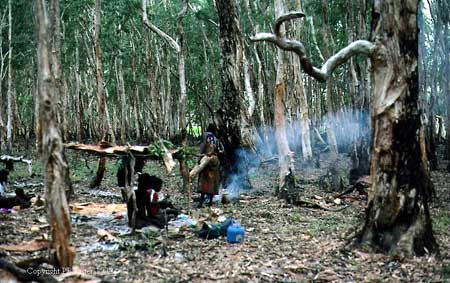
click on photo for enlargement
This is a typical
day camp for the dry season. Situated within about 50 metres
from the water's edge and beneath a canopy of paperbark
trees, this afforded an ideal situation from which people
could hunt for long-necked tortoise and associated wetland
plant foods. The women and most of the children stayed and
hunted here, while the men and some of the kids travelled
to an adjacent area about half an hour away to hunt for
pied goose. Paperbark stripped from the tree trunks afforded
shelter, food preparation surfaces and seating.
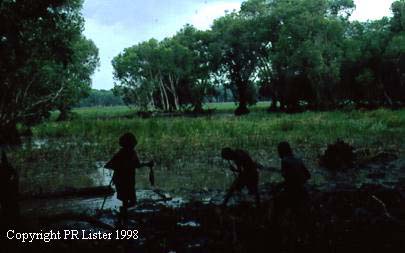 |
Long-necked
tortoises bury themselves in the drying mud
fringing the receeding wetland. They're located
by probing with metal rods. |
|
| Concealed
beneath a few inches of mud.... |
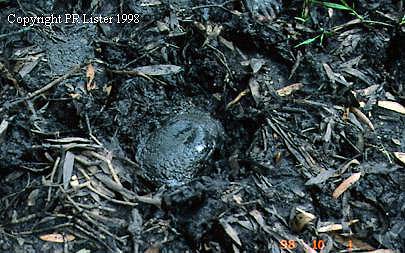 |
|
|
|
|
Pied
Goose is hunted and eaten on an almost daily
basis during the mid to late Dry as the birds
become concentrated at the shrinking water
sources.
Preparation.....
|
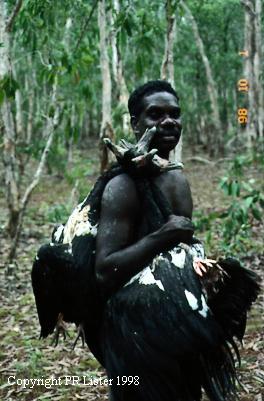 |
|
|
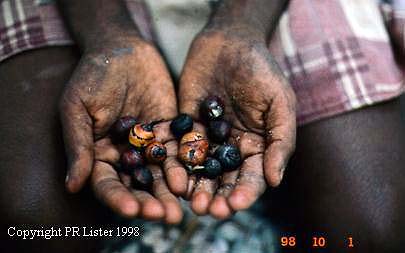
|
These
are water chestnuts (Eleocharis dulcis).
Botanically, they're regarded as the same species
as the water chestnut used in Asian cooking,
but in Australia they're much smaller. They
form much of the conspicuous grassy-looking
vegetation in the wetlands of the north. These
ones were collected from a pied gooses' crop
during its' preparation for cooking. Full-flavoured,
crunchy bushtucker. |
|
| We
crossed the tidal flats and ..... |
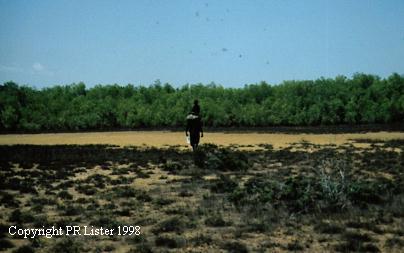
|
|
 |
amidst
the mangroves,..... |
|
|
|
|
|
|
Can
you see that fat, juicy live one in the middle
of the photo? Hard to spot aren't they.
|
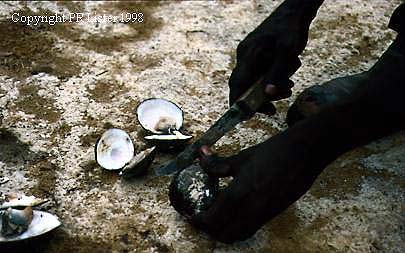 |
|
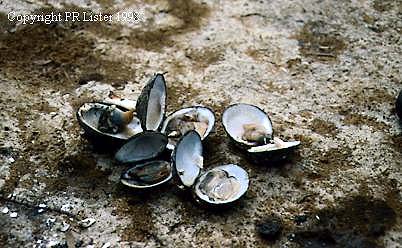 |
These
are absolutely delicious raw or cooked. |
|
| The
didjeridu is a traditional instrument in the
Top End (from the Kimberley east as far as Mornington
Island) and I was fortunate to be invited to
tag along and see how they were cut
and finished. |
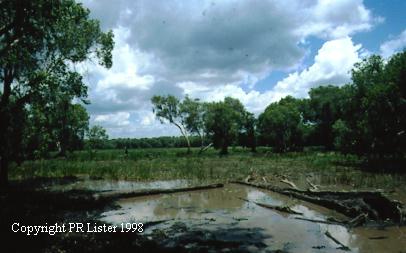 |
|
 |
The water buffalo are big - one left a 'cake'
behind - the boys decorated it with pandanus
seed - what a laugh! |
|

